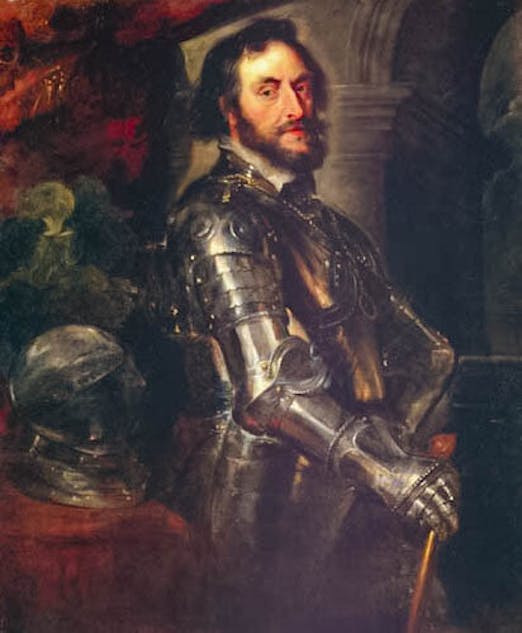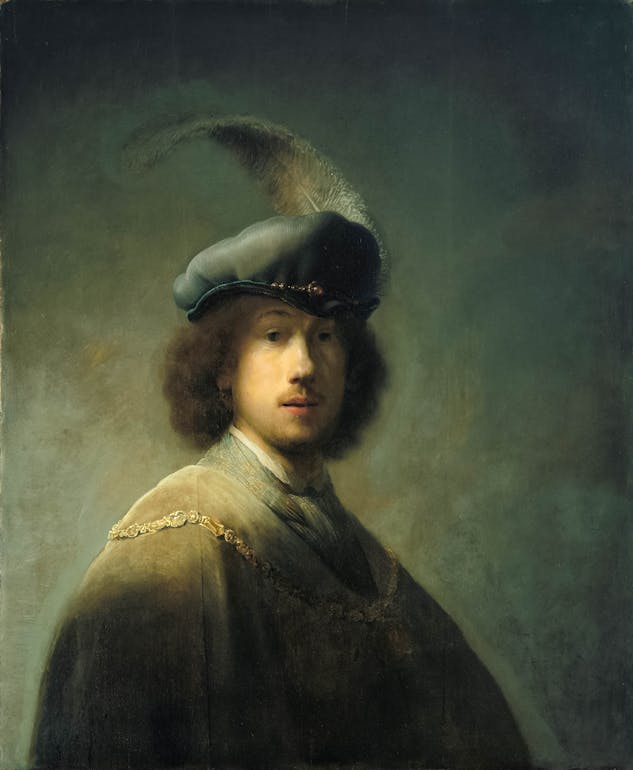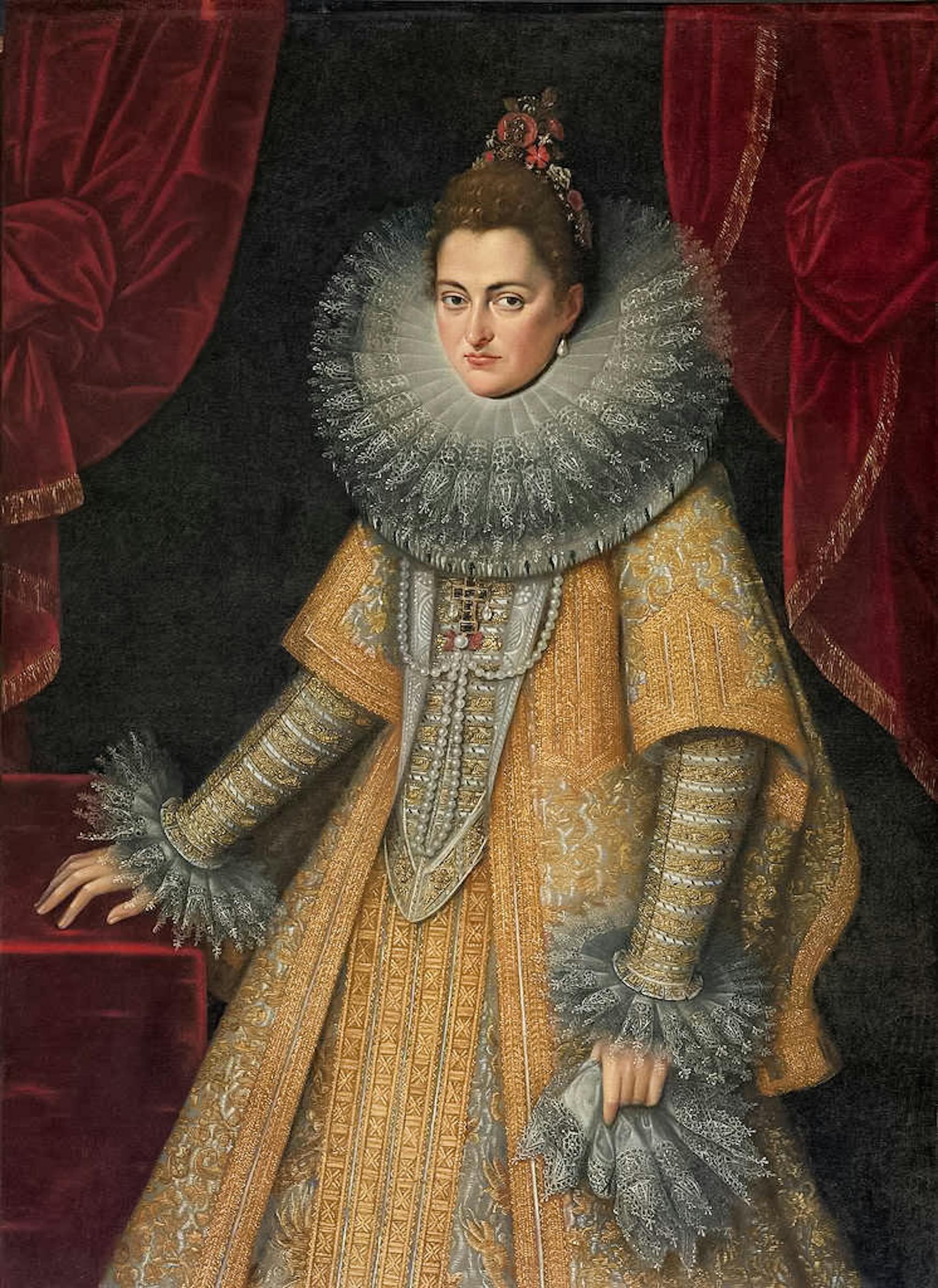17th century portraiture in the Isabella Stewart Gardner Museum
A breakdown of four portraits by Dutch painters Pourbus, Rubens, Van Dyck and Rembrandt.
The Isabella Stewart Gardner Museum houses four paintings by Dutch masters that represent a variety of portraiture styles of the era. These four portraits by Frans Pourbus the Younger, Peter Paul Rubens, Anthony Van Dyck and Rembrandt Harmenszoon van Rijn chart the evolution and development of portraiture from about 1615-1635, with several elements shifting during this time, including the choice of background, the amount of detail in the costumes worn and the painting style itself.
Each of these paintings presents a high status individual from the time, and three of the works demonstrate the evolution of portraiture for wealthy patrons during this time frame. In these works, it is apparent that there is a move from emphasizing the exterior trappings of wealth and power towards a greater concern with the artistry itself. While these portraits represent a conventional development of the portrait, the self-portrait at the museum by Rembrandt from 1629 is a turn even further from the styles of the other three, abandoning the symbol-laden backgrounds for a more concentrated focus on the subject.
The earliest painting in this group, “Portrait of Archduchess Isabella Clara Eugenia,” by Frans Pourbus the Younger, presents the archduchess, a powerful ruler and art patron, and makes no exceptions in showing this off. In this painting from approximately 1615, the archduchess is represented regally with her fine clothing. Although there is a grandiose background of red velvet curtains, the archduchess takes up the majority of the composition.
Unlike more endearing works that may have been done of Isabella when she was the infanta — or a daughter of a Spanish or Portuguese monarch — of Spain, this painting is from later in her life, when she is not a young princess but instead an established sovereign. The only symbol of personal proximity shown in this portrait is the direct eye contact being made with the viewer. However, the gaze at the viewer does not appear to be particularly muted as it is an intense and direct stare. Her eye contact does not make the viewer think that she was caught off guard, but instead it appears that she is choosing to look at us.
The costume depicted is extremely grand yet at the same time quite modest to show off her calculated public image as a dedicated Catholic ruler. Although Isabella came to show tolerance and appreciation for the Netherlands, she was still a Spanish Catholic leader. In the middle of her dress is a cross, an important symbol of the archduchess’ Catholicism, especially considering the split and tensions between the Protestants and Catholics at the time.
Similar to Rubens’ representation of Marie de Medici, Pourbus considers the relationship between femininity and power. Isabella is represented as a powerful woman on her own, without the direct presence of her husband, although he may be implied to be present as a viewer, which could soften the intimidating prospect of a woman with sole power. Her modest and pious covering ensures that we only see her hands and face, to present the archduchess as a virtuous woman. Her costume is extremely well constructed and the greatest detail is placed in the delicate pattern work on her dress.
The very minimal background gives away little; however, the fine material of the curtains behind her place an emphasis on the wealth and exuberance of her court without taking away attention from her. There is contrast between the costume’s material that seems to be rigid and unmoving with the soft appearance of the curtains. The frills around her neck and the similar ends of her sleeves are stiff and appear unmovable, in contrast to the curtains that appear to have been loosely tied back.
This choice of different fabrics might have been an intentional choice for Pourbus to show off his competent abilities for painting textures. Pourbus employs chiaroscuro — a technique which employs clear tonal contrasts — through the choice of making the background of Isabella fairly dark and nondescript ensures the focus is placed on her. The tonality of the archduchess’ pale complexion along with her light colored dress make her pop out as the focus of this portrait. In some respects, the intricate details of the costume may take away from the vitality of the archduchess by drawing the viewer’s eye to her dress instead of her.
In comparison, Rubens’ portrait of the earl of Arundel completed about 15 years later departs somewhat from the early portraiture style of the Spanish Netherlands like Pourbus’ painting of the archduchess. In the “Portrait of Thomas Howard, Earl of Arundel,” although Rubens paints an exquisite costume for the earl, we also see a more three dimensional facial expression, capturing the sitter’s mannerisms more accurately than Pourbus’ earlier piece, a progression that Van Dyck comes to master.

This painting was done following Rubens’ trip to Spain where he spent a great deal of time copying Titian’s portraits of the Hapsburg court. Rubens sheds the grandeur of his early portraits done in Italy, and this painting is done in a more conservative manner, as was more popular in the Spanish court.
While a portrait of the earl done a decade or two earlier would have likely been done in a style closer to Pourbus, with more extravagance, Rubens’ patronage portraits became more muted later in his career. This detailed portrait strays away from the early portrait style Rubens had focused on in Italy and presents one specific side of the earl, focusing on his military strength. After the Duke of Buckingham was killed, the earl of Ardunal Thomas Howard was able to gain control as the principal counselor to King Charles and Rubens makes it clear for the viewer that Howard is a person of high status. This portrait’s message is moderated by the artist, and in this case, Rubens focused on showing the nobility of the earl. His status is clear, as he is dressed in armor with a helmet and a baton, and this reveals him as the “Earl Marshal,” the title that gave him military power.
This portrait was likely done for Howard because Rubens probably wanted to flatter him, as he was an accomplished art collector, Howard would have likely wanted to have it proclaim his power to other nobles as well as the king. It is unlikely that this would have been produced for familial reasons, because at around the same time Rubens was working on a painting of Howard’s wife, Alathea Talbot the Duchess, along with Sir Dudley Carleton and dwarfs that holds a very different and more domestic quality.
Although Howard was not known for his prowess as the earl Marshal and was better known as an excessive art collector, Rubens chooses to exclude the latter completely. Everything in this painting is meant to complement his power, from the baton, a symbol of his title, as well as the chain of office, another symbol of his title. When looking at the background there appears to be a triumphal arch, something that is often associated with the ancient Romans building in newly conquered provinces to commemorate victories. The earl of Ardunel was also involved in supporting early British colonization of foreign lands, so perhaps the arch alludes to this.
Although Howard was not known for his prowess as the earl Marshal and was better known as an excessive art collector, Ruben chooses to exclude the latter completely. Everything in this painting is meant to complement his power, from the baton, a symbol of his title, as well as the chain of office, another symbol of his title. When looking at the background there appears to be a triumphal arch, something that is often associated with the ancient Romans building in newly conquered provinces to commemorate victories. The earl of Ardunel was also involved in supporting early British colonization of foreign lands, so perhaps the arch alludes to this.
This portrait of Thomas Howard provides a public image of the earl, largely based on the costume choice. Because he did not wear armor regularly, this is meant to show off his political power and proximity to the king. Rubens constructs a portrait that tells us everything that the earl wants the audience to know about him.
When looking at the brushwork in this portrait the metal armor is particularly crafted to make the other elements appear to be reflecting off of it. The texture of the background appears relatively soft in comparison to the rigidity of the armor’s metal that is crafted to seem heavy and clunky. Howard’s facial expression is framed by the fact that there seems to be a light on his face and this is the most well lit part of the painting. Rubens’ use of illumination of the face and around the head draws attention to the sitter’s stern expression. The earl is gazing directly at the viewer with a confident and unwavering stare to assure the viewer that he is decided in his decisions, and the light focusing in on this helps accentuate it.
Van Dyck’s “Woman with a Rose,” done during his sojourn in London, was crafted in the later years of his stay after arriving in 1632. Van Dyck, who was much younger than the previous two painters and mentored by Rubens had the ability to base his portraiture on their work. However, Van Dyck’s work demonstrates a unique and evolved version of the previous two styles. He spent time in Italy like the other two painters, so his work has an Italian touch, but his style is also inspired by Rubens’, creating a unique and flattering lifelike quality that made him such a popular painter.
Unlike the previous two, the woman portrayed is not a prominent historical figure, but her aristocratic status is still conveyed by Van Dyck, something that differentiates the sitter; however she still represents a modest and well off Englishwoman. Her dark silk dress, with delicate sheer gauze draped over and the strand of pearls are intentional and obvious luxury shown off in the portrait. The most striking display of her societal standing is perhaps her blasé crossed hands, and the pink rose that hangs down.
We don’t see power embodied like the other two portraits, in a political sense, instead there is a more casual and lackadaisical quality of nobility. Less is known about the woman’s precise identity, making it more difficult to know the exact reason for the commission, but this was likely commissioned by her family. She does not look particularly youthful, so it’s fair to assume this was not for the purpose of sending to a potential suitor. She appears to be more of a matriarch so it is likely that perhaps she and her husband were patrons of the arts, and that is what led to the creation of this painting.
The posing of her hands lazily crossed and holding the flower are notable details of this painting. Long slender fingers and flowers as a symbol are both signatures of many of Van Dyck’s paintings and this portrait is an exemplary sample of this. Although the woman appears to be a distinguished noblewoman she also appears less calculated than the other two. This portrait seems to be meant to be viewed in a more domestic setting in comparison to the other two.
However, Van Dyck was likely still painting an extremely idealized version of the woman, presenting her as a very fashionable Englishwoman with the satin dress and pearls, both popular for people in her position. There is a sense of mystery conveyed in the portrait, although it is likely unintentional due to poor documentation of her identity. It is likely that she was simply one of the many noblewomen Van Dyck painted in his career with no intention of trying to make her an enigmatic figure.
This portrait does not inflect the gender standards for portraiture of this time period in comparison to the archduchess. We see conventional beauty and gender standards interacting very similarly to many of Van Dyck’s other aristocratic women. The costume and woman are the main focus of the painting and there is much less detail in the outdoor background.
When looking at painting technique utilized, the outside scene was painted but it covers only a small portion of the background and seems to have been done with much larger brushstrokes. Van Dyck also does utilize chiaroscuro a bit, especially with the contrast of the black satin against the white skin and pearls.
Finally, the only self-portrait of the four paintings — done in 1629 — is Rembrandt’s self-portrait, which captures a dissimilar image in many respects. Although Rembrandt is actually well dressed in this image with a feather in his cap and gold draped over this top, he does not fashion himself as a nobility in the same way that Rubens or Van Dyck might. In contrast to many of Rembrandt’s self-portraits of himself as a beggar, this does show a more idealized version of his features. We see a use of chiaroscuro to cast a shadow on most of his body, leaving the left side of his face and left shoulder in light.

Rembrandt also captures a facial expression that seems to be more expressive than any of the previous three. His lips are slightly parted and the eyes look directly at the viewer, creating an off-guard and almost surprised expression, something Rembrandt had practiced in many of his self-portraits. This portrait also has nothing displayed in the background while the other portraits by Pourbus, Rubens and Van Dyck all present a setting, Rembrandt instead focuses the viewer’s attention solely on the figure.
Rembrandt’s work stands out from the previous three as the least formal and the least dependent on the costume and setting. This is especially noticeable in comparison to the painting of the archduchess where her features are not as naturalistic and we see more of the figure to show off the costume’s details.
This portrait is the only one of the four that excludes the hands and most of the torso, as well as most of the lower half of the body. Rembrandt’s style shows the progression to less detailed costume work and more focus on realistic facial expressions with vitality. The lucidity of the portrait only focusing on presenting Rembrandt himself demonstrates his own virtuosity as an artist.
During the early seventeenth century in the Netherlands, portraiture was very popular for wealthy patrons to capture their likeness and each of these paintings demonstrate extensive amounts of skill in creating a flattering picture of the sitter. However, each of these works expresses slightly different intentions and requires a different context. The earliest by Pourbus showcases the archduchess and her power, and the Rubens likewise focuses on the military might of its subject. The Van Dyck conveys a more subtle nobility with the attention to detail of the appendages. Finally, the Rembrandt presents a flattering self-image that leaves little else to contemplate but the mastery of the artist.



Please note All comments are eligible for publication in The Justice.